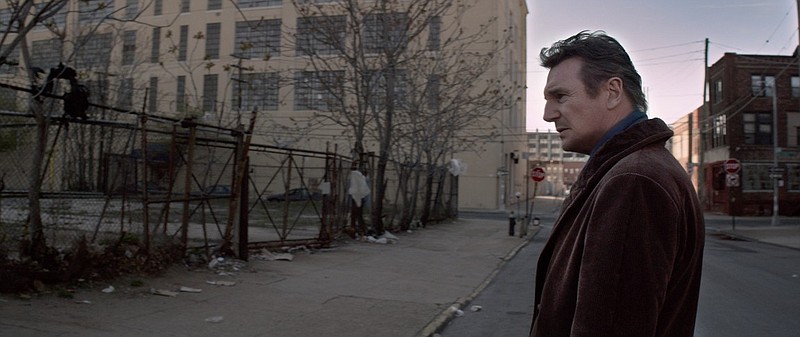A new study shows that seniors have a much larger impact on the success - or failure - of a film than previously realized, even films that might seem aimed at a much younger audience.
When moviegoers 50 and older pick their flick, they often are determining whether that film will be a hit or a miss revenue-wise, which means they are also "voting" with their box-office dollars on what may be booked into local cineplexes in months to come.
In March, AARP announced findings on a study examining the effect moviegoers age 50 and older have on the movie business.
According to the study, more than 30 percent of all cinema visits were made by 50-plus adults. The study, conducted by Movio, a marketing data analytics firm, was released during CinemaCon, the National Association of Theatre Owners' annual conference in Las Vegas.
The study found that people 50 and older are "a powerful force at the box office." The 50-plus consumer bolsters blockbusters and drama film box-office revenue and creates "lucrative new niches that don't rely on mega budgets and foreign exhibition success to be profitable."
The study "is about creating an awareness of the vibrancy of the 50-plus segment," explained Matthew Liebmann, senior vice president-the Americas of New Zealand-based Movio, which looked at 266 films and nearly a million box-office records.
One benefit of the study for older viewers may be theater bookers keeping films on longer and show times earlier.
"This particular audience leans toward weekdays, typically Monday through Friday before 6 o'clock," Liebmann said.
The AARP study showed how the 50-plus moviegoer has helped establish an emerging subgenre referred to as "mature thrillers." This new category includes action-driven films starring veteran male actors.
The study found that:
- 51 percent of the moviegoers who saw "Jack Reacher: Never Go Back," "Taken 3," "A Walk Among the Tombstones" and "The November Man" were over age 50, likely because fans are aging alongside such action stars as Tom Cruise, 55; Liam Neeson, 65; Pierce Brosnan, 64; Keanu Reeves, 52; and Kevin Costner, 62.
- The 50-plus demographic is a significant contributor to the overall success of blockbuster movies such as "Star Wars: The Force Awakens." (The 50-plus viewers made up 27 percent of the total audience.)
"The whole idea of action films is starting to stretch," Liebmann said.
According to the study, this audience also was responsible for the success of several other genres of films, accounting for:
- 75 percent of all visits to art house movies.
- 56 percent of Christian film attendance.
- 54 percent of independent film box-office revenues.
Advertising certainly seems to work. The 50-plus crowd "attends movies marketed specifically for them at a rate that is significantly greater than that of the average moviegoer," according to the study. Senior audiences who watched "Woman in Gold" (2015), for example, went to the movies 14.5 times over the past year, compared with 6.7 times for the average American moviegoer overall.
"Philomena" (2013), "The Hundred-Foot Journey" (2014) and "The Second Best Exotic Marigold Hotel" (2015), films about older women, for older women, had similar appeal with this audience. The study also found that female moviegoers are drawn to films starring such actors as Judi Dench, 82; Helen Mirren, 72; Maggie Smith, 82; and Meryl Streep, 68.
"Older audiences can create genuine blockbusters too," the study reported. This happened in 2016 when Clint Eastwood, now 87, teamed up with Tom Hanks, now 61, for "Sully," the movie about then-58-year-old Chesley "Sully" Sullenberger, the pilot who safely landed a US Airways plane on New York's Hudson River. Driven by an audience that was 57 percent age 50-plus, "Sully" generated more than $120 million at the domestic box office. Its production budget was $60 million.
Seniors aren't in a big hurry to see a film, however - even a big-budget one. Movio found that they are considerably less likely than other moviegoers to catch a film on opening weekend. In fact, 60 percent of their box-office visits come, on average, 15.2 days after a film's opening.
One place where the senior demographic may benefit is at the cinema concession stand. Liebmann suggested that theater owners may bring back smaller sizes of popcorn and sodas, once offered for children 10 and younger, for example.
As it is, today's cinema concession stands have expanded their offerings quite a bit, adding items not found a decade ago, including, in some theaters, alcoholic beverages.
"Alcohol licensing is a nod toward older audiences," Liebmann said. "A lot of time and money is spent with friends before and after the movie."
For recent retirees with children no longer at home, theatergoing may become an even more popular option, Liebmann said, as some cinemas begin to offer "good quality food" to go along with those reclining seats.
While senior moviegoers clearly play a big role in regards to revenue, they may not significantly change what plays on the screens at their neighborhood theaters. "The whole booking process has no local input," said Steve Persall, film critic for the Tampa Bay Times. "It's done in Los Angeles and New York City.
"There is much more ignorance going into the distribution of movies than these statistics can change," Persall noted, adding that often a distributor will book a film into [one or two theaters] and think that covers the entire [area] market.
